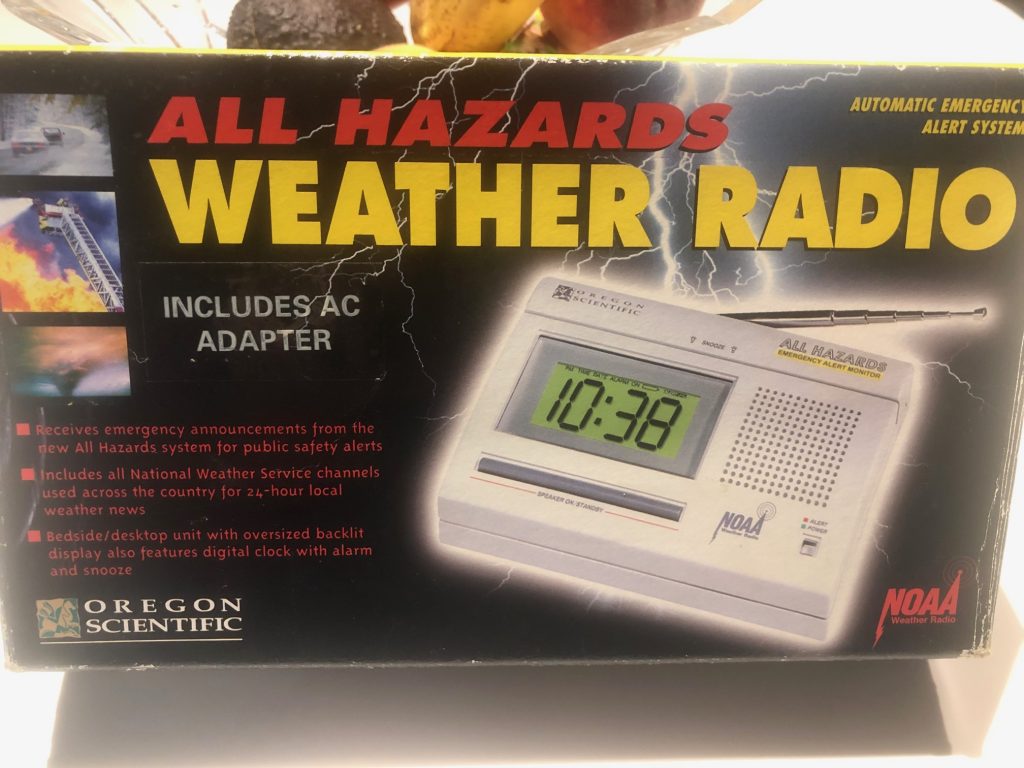
Weather self-defense: How to get real-time alerts to help you prepare
| August 22, 2023
Editor’s note: This is a free newsletter that was sent to subscribers. To sign up for the newsletters, email us.
If ever there was a summer that underscores the importance of staying alert to changing weather conditions, it’s been this one.
It’s been a season of apocalyptic smoke, wildfires, deadly floods, destructive torrential rains, tornadoes and who’s to say what the remainder of the hurricane season will bring? (Hint: If past history is any guide, the outlook is not promising.)
Though no one has an absolute crystal ball for predicting the weather, there are easy ways for you to get vital real-time information about extreme weather events.
Think of this as a guide in weather self-defense.
Sign up for alerts from your state or locality
Flooding is probably the No. 1 greatest threat in the Delaware River watershed.
As I’ve written before, climate change is going to lead to extremes in precipitation — producing an overabundance of water when it rains or prolonged dry spells leading to drought.
But flooding does not take place in isolation. It’s usually preceded by extraordinary rainfalls or by the ground being oversaturated. Signing up for alerts will flag you to a range of hazardous weather conditions.
In New York, you can sign up for NY Alert, which warns “citizens of emergencies and critical information in a timely manner to help protect lives and keep New Yorkers safe.”
In New Jersey, you can sign up for text and email alerts.
In Pennsylvania, you can sign up for AlertPA and CodeRED weather warnings that will automatically alert you if your registered address is in the path of severe weather as predicted by the National Weather Service. (We rely on this at home and find it’s very helpful. Messages about the weather come via text, email and voice mail.)
And in Delaware, sign up for weather and other alerts here.
The American Red Cross also has a free app that allows you to customize 40 different weather alerts. According to the Red Cross, the app offers step-by-step guides to help you prepare.
FEMA webinar
The Federal Emergency Management Agency is offering a flood preparedness webinar on Thursday, Aug. 24, from 1-2:30 p.m.
Learn how to get National Weather Service alerts and warnings and what to do before, during and after a flood. Register at NOAA – Flood Preparedness.
Also, this is a guide to a full menu of alerts, as put out by FEMA.
Important to remember!
Be sure to check your phone’s settings so that the alerts are enabled.
Below is an example of what it looks like on an iPhone.
Look under Settings >>> Notifications >>> Scroll to the bottom. (Other phone brands will look different.)

National Weather Service resources
There are 122 National Weather Service Weather forecast offices across the country and each has its own social media presence.
You can put in your ZIP code here to stay current on the latest forecasts, watches and warnings for your local area. The site will also bring up the website for your local Weather Service office, its email and phone number as well as its social media accounts.
An excellent real-time source of extreme weather information — everything from heat, hail, tornadoes, flooding, damaging winds, severe thunderstorms, etc. — is the National Weather Service’s Storm Prediction Center.
Follow it on the social media platform formerly known as Twitter, on Facebook or go to its website for informative graphics and maps that are easy to understand and present information in plain language.
Other outlets you can rely on
The New York Times has customizable alerts for the weather. You can sign up for more than one location and get emails tailored to your geographic needs.
And then there are lots of professional, commercial and amateur meteorologists on social media. Some of our favorites include: EPAWA Weather Consulting; MyRadar Weather; NY NJ PA Weather and Collin Gross.
Apps
Nationally, there are more than 10,000 weather apps for iPhone and Android smartphones, with varying degrees of accuracy, according to Ben Gelber, a Columbus, Ohio, television meteorologist and Poconos weather expert.
He said the National Weather Service has an app and so do many third-party vendors. Some of the most popular and widely used third-party sources include Storm Shield, Weather Underground, AccuWeather and the Weather Channel.
Gelber said weather apps use different data sources, such as the European or American forecast model, a model blend, or a proprietary “in-house” model. This accounts for hourly forecasts that do not always agree, such as the temperature and precipitation probability.
Go old school
If you don’t want to rely on your smartphone or computer, you can go old school and use a NOAA weather radio.
We’ve had one for years and it’s as reliable as they come.
Plug it in (or use batteries — always a good idea to have batteries handy for flashlights), turn it on, tune to your local feed and listen for the updates.
The updates come in the form of automated, robot-sounding audio. The updates will give you detailed information about the locations and tracks of storms.
On our model, you can mute the feeds but they will break in with a flashing red light and a series of jarring tones to get your attention when there is an urgent alert.

Coming up in the next newsletter: Advice from the experts






